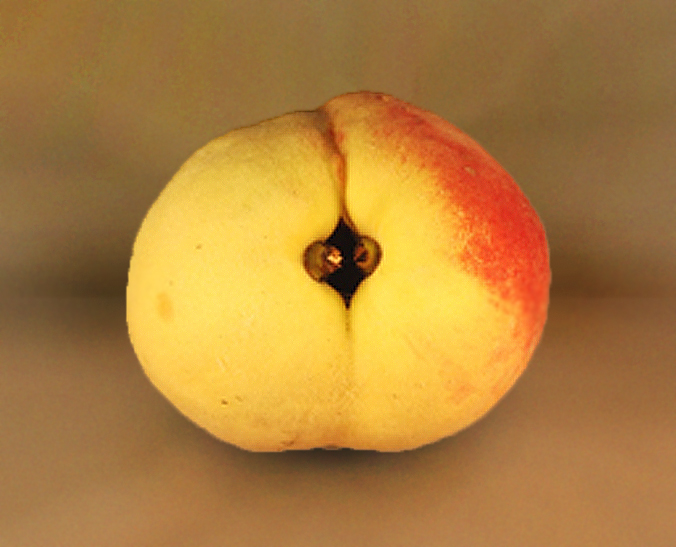Taking an environmentally sensitive approach to pest management
Split Pits in Peaches
Published: July 28, 2016
This summer there has been an abundance of peaches with split pits. Split pits are openings at the end of the fruit where it was attached to the shoot. Peaches with split pits are easily recognized while on the tree because they are often larger and ripen earlier than those without this disorder. Fruit with split pits also have a shorter shelf-life and are prone to disease infection, especially in the flesh adjacent to the pit.

Stem cavity of a Redhaven peach exhibiting a split pit.
During the early development of the fruit, splitting occurs at two different times. The first time is at about 20 days after full bloom while the pit is still soft. However, the second splitting is considered to be the most damaging, which occurs later after pit hardening when the expanding flesh that is attached to the pit exerts enough force to cause the pit to break along its suture.
The occurrence of split pit is difficult to control. Generally, but not always, early-ripening cultivars are more likely to have split pits. However, this year about 25% of the Redhaven fruit produced at the Horticulture and Agroforestry Research Center near New Franklin, Missouri had split pits even though fruit of this cultivar ripens mid-season. Sub-freezing temperatures during flowering and early fruit development are often associated with split pits. Also, excessive rainfall near harvest also promotes split pits. In 2007, researchers found that two genes, PPERFUL and PPERSHP were expressed in peach during the period of fruit growth. Perhaps in the future these genes may be regulated to develop cultivars less prone to split pits. In the meantime, the selection of mid to late season ripening cultivars may be the best solution to avoiding fruit loss associated with split pits.
Subscribe to receive similar articles sent directly to your inbox!
- The Peento Peach: More Than A Curiosity (08/13/20)
- Catfacing Injury on Apples and Peaches (05/29/18)
- Split Pits in Peaches (07/28/16)
REVISED: July 28, 2016